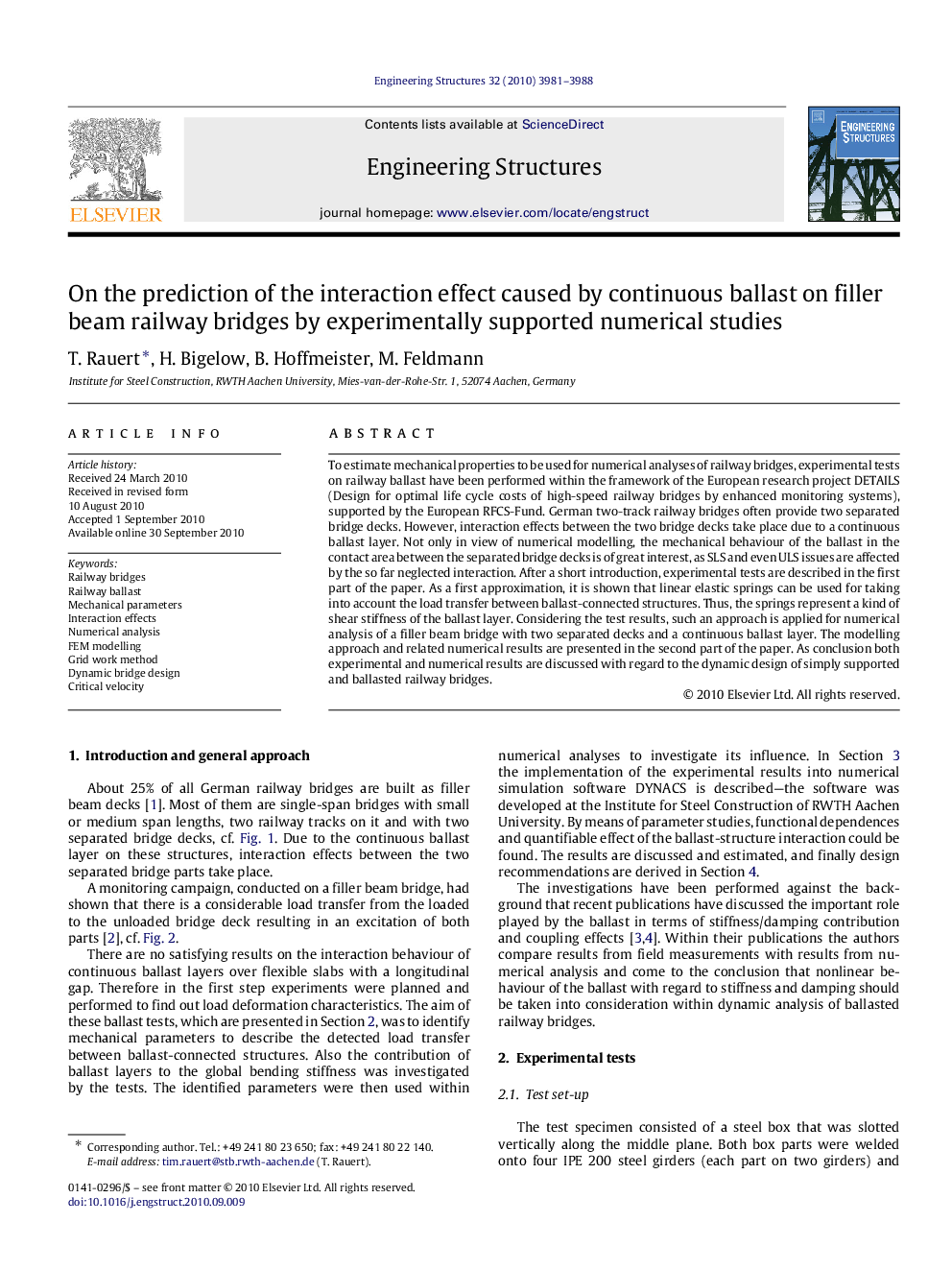| Article ID | Journal | Published Year | Pages | File Type |
|---|---|---|---|---|
| 267722 | Engineering Structures | 2010 | 8 Pages |
To estimate mechanical properties to be used for numerical analyses of railway bridges, experimental tests on railway ballast have been performed within the framework of the European research project DETAILS (Design for optimal life cycle costs of high-speed railway bridges by enhanced monitoring systems), supported by the European RFCS-Fund. German two-track railway bridges often provide two separated bridge decks. However, interaction effects between the two bridge decks take place due to a continuous ballast layer. Not only in view of numerical modelling, the mechanical behaviour of the ballast in the contact area between the separated bridge decks is of great interest, as SLS and even ULS issues are affected by the so far neglected interaction. After a short introduction, experimental tests are described in the first part of the paper. As a first approximation, it is shown that linear elastic springs can be used for taking into account the load transfer between ballast-connected structures. Thus, the springs represent a kind of shear stiffness of the ballast layer. Considering the test results, such an approach is applied for numerical analysis of a filler beam bridge with two separated decks and a continuous ballast layer. The modelling approach and related numerical results are presented in the second part of the paper. As conclusion both experimental and numerical results are discussed with regard to the dynamic design of simply supported and ballasted railway bridges.
